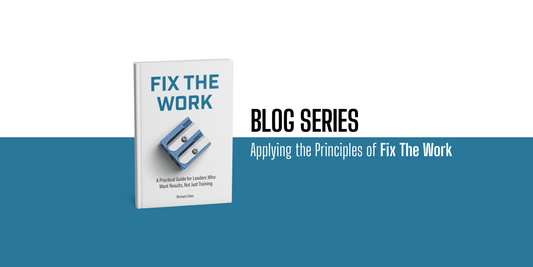Timelines Are Linear. People Are Not.
Richard SitesShare This Post
I posted a list of 30 Blunt Truths About Learning and Performance the other day. Most of them are things I’ve lived through, not just clever observations. Some got a lot of agreement. Some hit a little harder. But the one that keeps sticking with me is #19: More time means more second-guessing.
It sounds reasonable. Harmless even. Who doesn’t want a little more time to get it right?
But this is the one that quietly wrecks projects. Especially in L&D.
Time feels like a gift. Ten more minutes before the meeting. Fifteen extra minutes to get popcorn before the movie starts. We like that kind of breathing room.
But group work? Especially creative, cross-functional group work like L&D? That extra time doesn't buy clarity. It buys confusion. It doesn’t create alignment. It creates drift.
Here’s why: timelines make us believe we’re all moving forward together. That the project has a start, a middle, and an end—and that everyone is watching the same clock. But that’s not how teams actually work. People wander. Priorities shift. Focus fades. The timeline might be linear, but the people are not.
Most team momentum isn’t continuous. It’s episodic. It happens in short bursts—review sessions, feedback calls, status updates. In those moments, everyone shows up, gets refocused, and makes a few key decisions. But between those moments? The project unravels. People forget where things left off. They assume someone else is driving. Or they start questioning decisions that were already made.
That’s why asking for more time feels like progress, but usually isn’t.
When you say “let’s give it another week,” what you’re really doing is creating space for doubt. You’re inviting back every vague concern, every lingering “what if,” and every stakeholder who didn’t speak up last time. Instead of refining the solution, you’re reopening the whole conversation.
And while you’re holding that “almost finished” deliverable like a delicate sculpture, the rest of the team has already moved on. Their focus is elsewhere. Their attention has shifted. And now you’re not just trying to improve the work—you’re fighting to get everyone to care about it again.
That’s the real risk. Not that you’ll miss a detail. But that you’ll miss the moment.
Every extra day between group alignment sessions is a step away from relevance. People get new assignments. Priorities shuffle. You’re no longer working on the thing everyone agreed on last week. You’re working on your own version of it, hoping the others still remember what it’s for.
Instead of seeing projects like a train on a schedule, try seeing them like fireworks. The kickoff is the fuse. The review meeting is the boom. After that, everyone scatters. Every day you wait to relight that fuse is another day people drift further from the goal.
So here’s the tradeoff. When you ask for more time, you might polish the product. But you lose traction. And you can’t ship traction later. You either have it now, or you don’t.
Next time you’re tempted to ask for a few extra days, ask yourself something else instead.
Who’s still paying attention?
Because you might be the only one still holding the torch.




